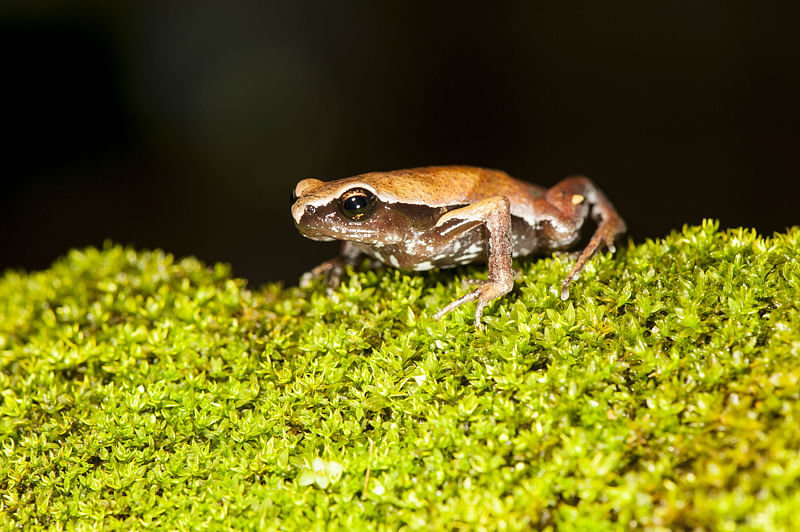
Indian scientists have discovered a new mystery frog with a secretive lifestyle in the Western Ghats.
Detailed studies of the frog's external and internal morphology, calls, tadpoles and DNA confirm that the creature, found in a temporary wayside puddle in Kerala, represents an entirely new genus and species of microhylid (narrow-mouthed) frogs.
Its closest relative lives 2,000 km away in southeast Asia. The Indian frog was separated from its southeast Asian cousin nearly 40 million years ago in the Eocene era.
Delhi University scientists Sonali Garg and S D Biju who discovered the frog, named the new genus Mysticellus (from Latin word mysticus, meaning ‘mysterious’ and ellus, meaning diminuitive) and the species as Mysticellus franki (in the honour of evolutionary biologist Franky Bossuyt from Vrije Universiteit Brussel).
“Our discovery indicates that documentation of amphibians in the Western Ghats is still far from being complete. This frog went unnoticed until now because it appears for less than four days for breeding activities and lives a secretive lifestyle for rest of the year”, Sonali said.
A few years ago, during field surveysm she collected some strange tadpoles from the Wayand region that could not be confidently identified.
Subsequent genetic comparison led to a puzzle as the DNA barcodes failed to match any other known frogs of the region. The next two years were spent in vain searching for an adult creature.
The search finally ended on one fine day in 2015, immediately after the first one to two heavy monsoon shower. Large aggregations of over 200 frogs were observed on grass blades around a temporary rainwater puddle.
Breeding activities took place for less than four days, following which water levels increased dramatically leaving behind no trace of the animals.
The team failed to locate even a single individual of this frog at any other time of the year, despite repeated surveys at the same locality for three years.
Due to the extremely short breeding season of the frog and its disappearance for rest of the year, the new genus has earned the common name — mysterious narrow-mouthed frog.
The males attract females for mating through insect-like long pulsatile advertisement calls.
The calls, similar to insect chorus, makes it difficult to locate potential breeding grounds, especially when the activity of several species reaches a high with the onset of monsoon.
Calling males of this new frog are usually found beneath grass blades surrounding shallow water puddles.
The mysterious arrow-mouthed Frog has a pair of characteristic black ‘false-eye’ like spots on the lower back.
At the time of calling, males exhibited the behaviour of raising the hind part of their body displaying the two lumbar spots.
Similar behaviour is observed when individuals are disturbed, suggesting that these spots serve a defensive role against predators.
The discovery has been reported in Scientific Reports – a Nature group journal – on February 13.
